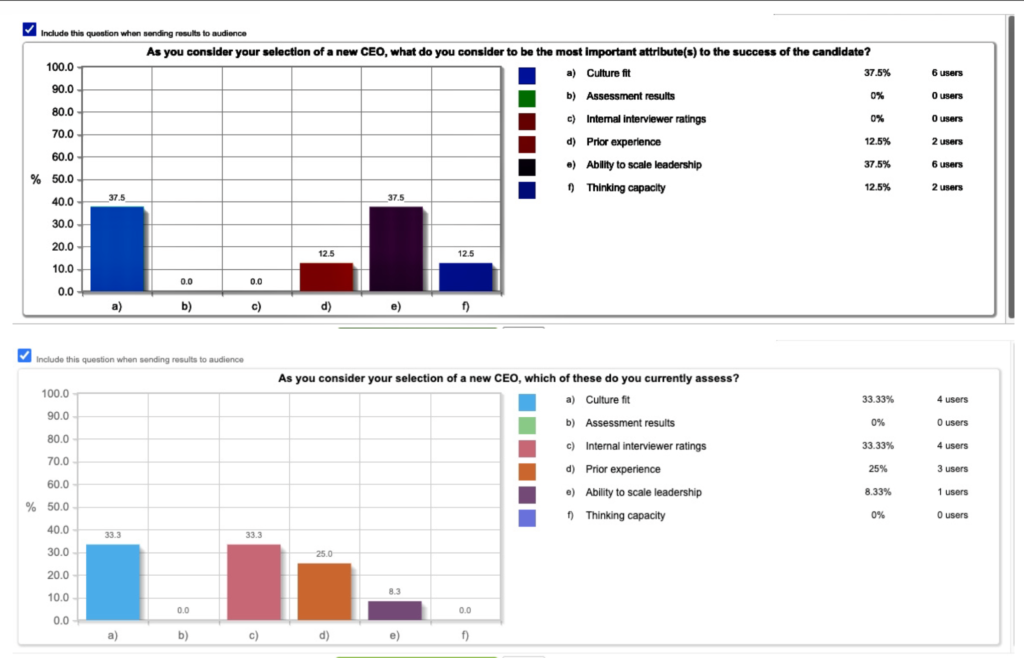Joy W. Goldman RN, MS PCC: CEO SixSEED Partners
Introduction: Case for Change
Turnover at the CEO position remains high: According to the American College of Healthcare Executives, CEO turnover was 17 percent in 2019.* (ACHE: “Hospital CEO Turnover Rate Shows Small Decrease.” – press release. In Development Dimension International’s 2021 Global Leadership Forecast, that polled close to 16,000 leaders across the globe, 55% of CEO’s indicated developing the next generation of leaders as their top challenge. These statistics and personal experience working with clients who have been traumatized by making a wrong choice, motivated Dr. Larry McEvoy, Dr. Kevin Mosser and I to offer healthcare boards a webinar through The Governance Institute called “How to Hire a CEO: A Guide for Ensuring Effective Selection at the Most Important Position.”
For SixSEED Partners, we see the hiring of a CEO as only one part of our sixth seed: Leadership Ecosystem Capacitation.
Current Process: Strengths and Gaps:
Whether in our country or within healthcare, we continue to look to the CEO as a heroic leader and in doing so, often place great emphasis on the CEO’s accomplishments and experience. It was fascinating to us that the participants on the webinar placed low importance to the role of experience in their candidate selection yet, in practice, it was one of the top three attributes that they assessed. (see graphs below). Bob Anderson and Bill Adams, in their book: Scaling Leadership: Building organizational capability and capacity to create outcomes that matter most” dispel the myth that leaders that prioritize results and technical expertise have the greatest impact on business results. To the contrary, after culling through hundreds of thousands of 360- degree -feedback assessments and comments from around the globe, these skills were shown to be non-differentiators for high performing leaders. Their research identified ten attributes, six of which were people-related. Some of these include developing others; empowering people; team-builder; leads by example; and good listener.
We were also surprised with the time paid to assessment results and interviewer ratings, given neither interventions were rated as having great importance to the participants. In our experience, we agree, in part with this assessment, given our observation that this process is often incomplete, where the personality profile results remain with the search firm and are not used by the hiring company to integrate into designing behavioral interview questions targeted at possible gaps, nor using as development once the candidate is hired.
The Neglected Attributes:
If you’ve read this far, you are probably guessing where we believe you need to focus to have the greatest chances of success for the candidate; your executive team; and your organization. The two attributes least assessed yet deemed most important to the CEO’s success is their ability to scale leadership, and to leverage and manage paradox (seeming opposite tensions).
Experience matters less in rapidly changing and volatile situations. What matters more is the degree to which you’ve built leadership and thinking capacity in your organization. As an example, SixSEED Partners was asked to offer change leadership training to a cohort of internal medicine physicians. In partnership with the Chief Quality Officer, we designed a workshop where we introduced both/and thinking as an adjunct to traditional problem-solving thinking. If these physicians have the thinking capacity to leverage individual AND team; mission AND margin; decentralized AND centralized needs; candor AND diplomacy; advocacy AND inquiry among others, then collaboration is strengthened and we increase their ability to lead sustainable change.
The Leadership Ecosystem Capacity Approach to Hire and Develop
What does this mean for you? Here are several steps you can take make a better CEO hire:
1. Elevate talent development as THE FIRST Strategic priority- for the board; for the executive team and for each leader.
2. Ask your CEO candidates a question similar to the following: “If your current organization were to give you a grade of A to F in relation to how well you’ve prepared them for your departure, what would they say? On what would they be basing their rating?” You want to listen for details around the use of development strategies like rotational assignments; creating a learning environment; internal promotions; and prepared successors. You want to listen for a blend of “I” and “We” statements.
3. Assess for their thinking capacity to manage paradox: “Give me an example of a decision you had to make where you felt torn between two or more competing perspectives. Who was involved? What was at stake? What did you consider in your decision-making process? What did you do? What was the outcome? What did you learn through the process?

Let’s hear from you
We’d love to hear your perspective as you and your board plan for your next CEO hire. Please post your responses on our LinkedIn page or send us an email here.


